20 surreal paintings explained
Surrealism was an avant-garde movement that emerged in 1924 after the publication of the Surrealist manifesto by André Breton. Inspired by psychoanalysis, he sought the representation of the subconscious in art through imagination and automatism. Artists such as Salvador Dalí, Man Ray, Joan Miró and René Magritte welcomed this movement.
However, before and after this avant-garde, the surreal has been present in many artists evoking the dream world, fantasy, imagination, occurrence associations and improvisation. This article collects a list of 20 surrealist paintings, most of them inscribed in the movement. Also included are some that have either set a precedent or been influenced by it.
1. The Persistence of Memory, Salvador Dali
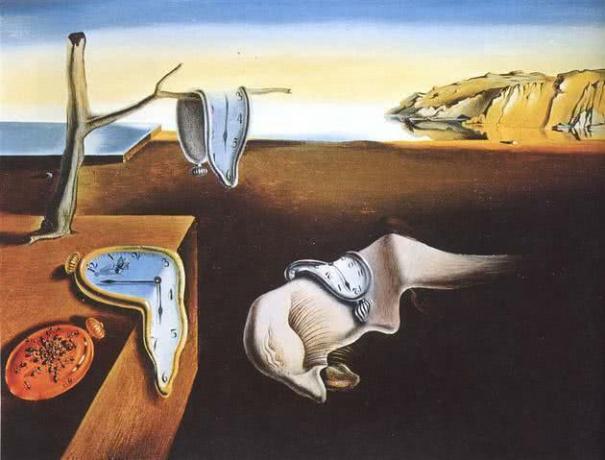
Picture The Persistence of Memory by Salvador Dalí is a fundamental reference of surrealism and, in particular, of the work of this painter. In the background, we see a landscape that reminds us of the Leonardesque line. Light is a characteristic element of Dalí. In the foreground, soft clocks announce the relativity of time. The space is also relativized by opposing lights. A shapeless figure lies on the surface of the pictorial universe. Some see in her features of Dalí's face.
2. The elephants, Salvador Dali
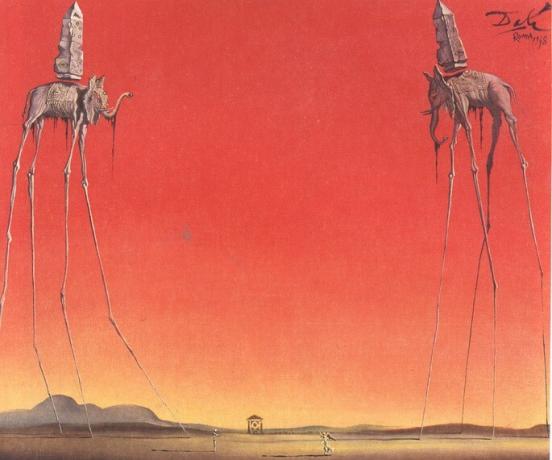
Dalí surprises in this canvas for the prominence of the void framed by two large elephants with extremely thin and long legs, like insects. With this, the force associated with these animals faces a paradox. Two collapsed obelisks float on their backs.

It is a reference to Bernini's sculpture in the Plaza de Minerva (Rome). For the Baroque, the obelisk was a symbol of wisdom, and the elephant was the symbol of the robustness necessary to carry it. On the Dalinian canvas, below, two anthropomorphic figures look tiny and insignificant next to the marvelous pachyderms.
3. The great masturbator, Salvador Dali

The whole painting subscribes to the program of surrealism, nourished by the theories of psychoanalysis, especially of the subconscious and libido. Dalí exhibits some recurring symbols of the painter: ants, a lobster, a seascape and a lion are some of them. The scene is a complex sexual allegory that mixes symbols of desire with symbols of purity (lily), which allows him to expose a taboo subject in his generation: complacency.
4. Soft construction with boiled beans (Premonition of civil war), by Salvador Dalí

Soft construction with boiled beans or Premonition of civil war it is a particularly poignant canvas. It presents us with the same body torn into two halves that, even so, seem to attack each other. On the ground you can see a handful of boiled beans (beans or beans), perhaps a symbol of the famine that reigned in Spain, perhaps a symbol of the "indigestible" of the conflict. This representation of a dismembered body is the allegory of the civil war.
It may interest you:
- 11 memorable paintings by Salvador Dalí.
- The Persistence of Memory, by Salvador Dalí.
5. The betrayal of the image (This is not a pipe) by René Magritte
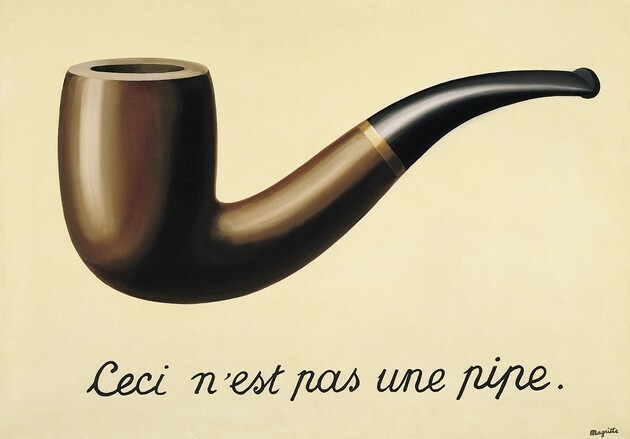
René Magritte plays on this canvas with the theory of signs. Through the use of images and words, he realizes the inadequacy of the sign to its referent: the pipe painted on the canvas is not a real pipe, but neither is the word "pipe". Image and word are only representations that replace the true reality. He gives a theoretical blow to the concept of Western art, based on the imitation of nature, and stands at the doorstep of conceptual art.
6. The philosophical lampby René Magritte
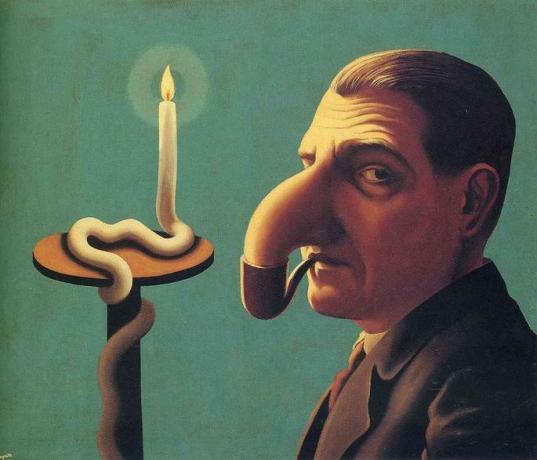
Two elements dominate the composition: a man who smokes a pipe as it closes over his nose; and a burning candle that melts hugging a table. The composition seems to accuse the "self-referentiality of thought". According to the researcher María Ángeles Arenal García, in her work entitled Magritte, the hunter of lost similarities:
The smoker, who gives the viewer a pathetic look of self-pity, is clearly Magritte, who by denouncing the circularity of his thought reveals to us indirectly the fertility of his imagination, which has the power to transform a candle into an agile and morbid form and the act of smoking into a metaphor for inquiry philosophical.
7. Son of Manby René Magritte
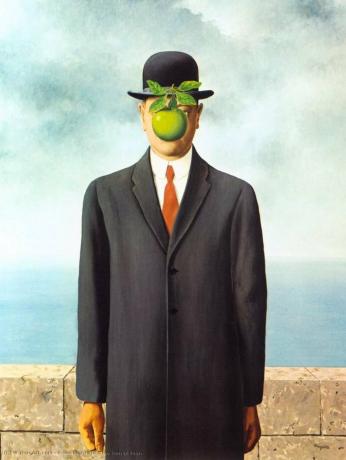
On Son of man, Magritte has interposed an apple between the character's face and the viewer. The identity of the man remains hidden. The apple appears recurrently in Magritte's work, sometimes associated with "the idea" and other times as fruit of knowledge and freedom, as well as the biblical fruit that contains the knowledge of good and wrong. The name of the work, Son of man, is a biblical reference.
You may also like:
- Surrealism: characteristics and main artists.
- Avant-garde.
8. Observatory Hour - The Loversby Man Ray
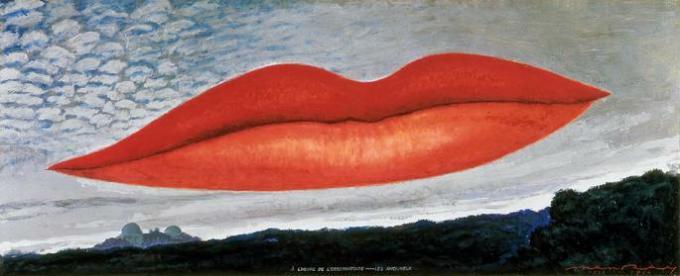
Man Ray dabbled in Dadaism and Surrealism. In this work, he works with erotic elements alluding to Freudian psychoanalysis. The canvas takes half his name from the telephone service that provides the Observatory time. Indeed, in the lower strip we see the observatory that Man Ray used to contemplate every day on his walks through the Luxembourg Gardens. Suspended in the sky we see a pair of lips, an allegory of the united loving bodies. The fullness of the hour or time of love is thus underlined.
9. Shakespearean Equation, The Twelfth Nightby Man Ray
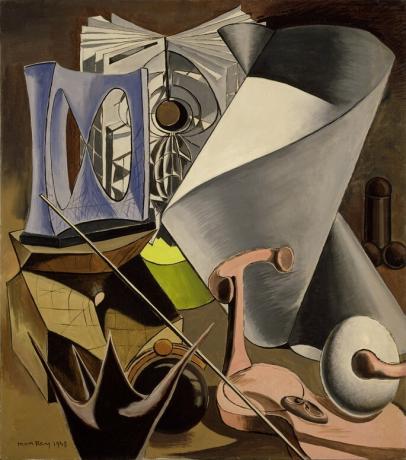
Man Ray presents a canvas inspired by Shakespeare's comedy The twelfth night (Twelfth night), also known as King's Night. Associate objects with no apparent relationship to each other, and create complex threads, such as the relationships of Shakespearean characters. Among these objects, an ostrich egg and a phallic object stand out, which are, at the same time, references to other works by Ray. The painter underlines the interreferentiality with this gesture, both in the relationship between literature and painting, as well as in painting itself.
10. Me and the villageby Marc Chagall

Marc Chagall cannot be circumscribed to a specific movement. His work can be considered, to some extent, as an antecedent of surrealism insofar as it is endowed with dreamlike and imaginative elements. On this canvas, a green face contemplates a cow, a maternal symbol. The scene is completed with references to the daily order of childhood, interwoven in a dreamy and colorful atmosphere.
11. Celebesby Max Ernst

Max Ernst was an artist who also passed between Dadaism and Surrealism. In this work, he imitates the technique of collage by representing the different textures of materials, and by making seemingly random associations. The background wanders between a sky and a marine universe. The main figure, elephant-like in appearance, has sexual connotations, as does the right tower, a phallic symbol. An interpretive hypothesis suggests that the horned crown on the monster's trunk and the female body allude to the myth of the rape of Europa.
12. Catalan landscape (The hunter), by Joan Miró
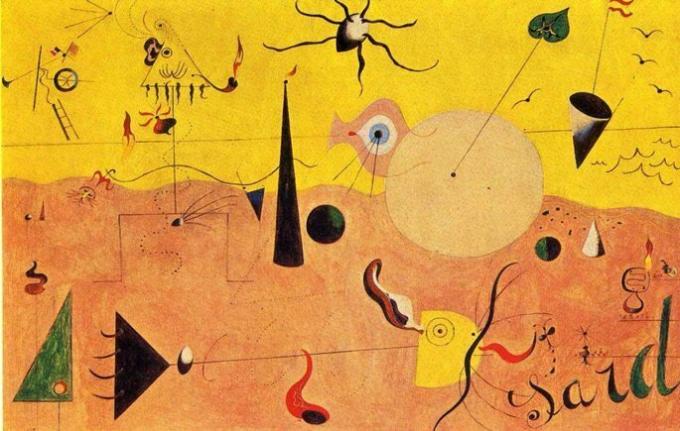
Joan Miró is considered one of the most important artists of surrealism thanks to the particularity of his methods and style. This work stands out for the process of graphic synthesis of the elements, among them, a Catalan peasant or hunter which has been summarized in his attributes: a triangle with an eye, mustache and beard, a pipe, an ear and a barretina. The rest of the elements reveal an arid Catalan landscape and, in the lower part, refer to the Catalan tradition known as the burial of the sardine.
You may also like: Joan Miró: 20 key works explained.
13. Mom, Dad is hurt!by Ives Tanguy
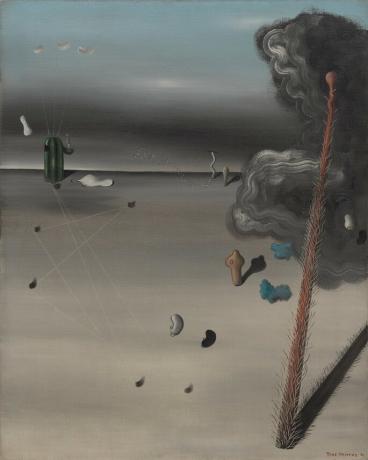
Ives Tanguy was part of André Breton's circle, and was considered an abstract surrealist. In this canvas, he presents a desolate scene with disproportionate and disproportionate figures, which draw our attention even more when considering the title: "Mom, Dad is hurt!". This interplay between the words and the pictorial work creates a different mental state in the observer, who does not find elements on the canvas to hold onto, at least not in a quick reading.
14. The invisible onesby Yves Tanguy
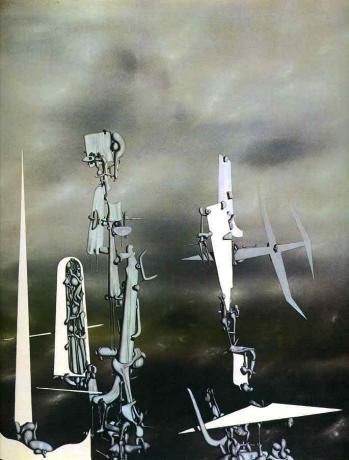
After the Second World War, Tanguy went to live in the United States. Influenced by the styles and collections that he met, he began to implement figures with biomorphic parts and mechanical parts on spaces, as in this canvas. The figures, like phantasmagorias, are erected on a vague and inert space. According to experts, these figures evoke the concern of the surrealists in that period for the beings of another world, a phenomenon that lacks a rational explanation.
15. Autobiography of an embryoby Eileen Agar

Eileen Agar is a British artist. In this work, the artist takes into account the postulates of the surrealist movement. She divides the canvas into four parts and sneaks into them reminiscences of Greek art. We will also see allusions to African art, to the Renaissance, that is, an evocation of cultural heritage, as defined by the Tate Modern in London, protector of this piece. We also see figures that look like cells and elements of the biological world.
16. What the water brought meby Frida Kahlo

Frida Kahlo was a Mexican painter who has been associated with surrealism, although she did not perceive herself in this way. Either way, the canvas What the water brought me it was precisely the one that earned him this epithet, by the hand of André Breton himself, curator of the first exhibition of it in New York. This canvas reviews Frida Kahlo's personal history: her cultural and ancestral roots, her illnesses, her ideas and her sexuality.
It may interest you: Frida Kahlo: biography, paintings, style and phrases of the Mexican artist.
17. The broken Columnby Frida Kahlo

The broken Column It is a canvas by Frida Kahlo that represents physical suffering. Not only was she a victim of polio and fibromyalgia, but the artist suffered an accident in her youth that caused severe spinal injuries. Frida Kahlo represents that suffering in this self-portrait in which the half-naked torso is opened to show an ancient column in ruins, while her body is burdened with small pains that represent the nails.
18. Exquisite corpse
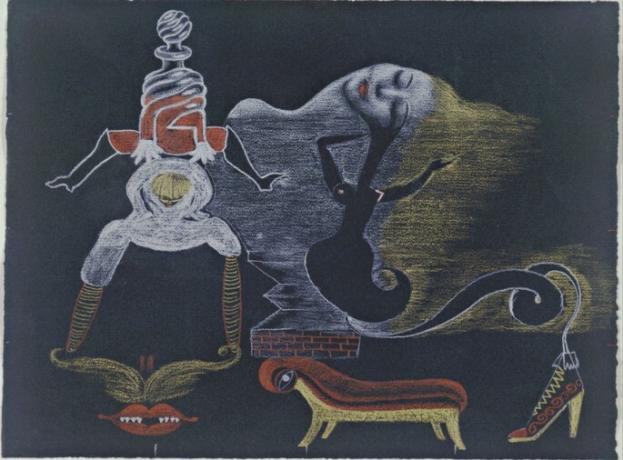
Surrealists frequently practiced a technique called "exquisite corpse", borrowed from literature. An exquisite corpse consists of the following: a person makes a spontaneous drawing (automaton) on a segment of the paper. This done, he folds the paper to hide the drawing and passes it to another participant, who must do the same in the next segment. At the end, the paper is unfolded, and a piece is revealed with multiple figures that, placed together, reveal the mechanisms of the subconscious. This specimen that we present has characteristic elements of the painter and dancer Valentine Hugo, who used black backgrounds. But it is a collective piece, in which different personalities such as André Breton participated.
19. Eyes on the tableby Remedios Varo

Remedios Varo is a Spanish-Mexican painter strongly influenced by surrealism. In this painting we see the imaginative play that separates the eyes from his eyelashed glasses. The elements are on a table that floats on a surface with a low density grass. The eyes seem to look from the outside at the instruments that should correct their defects. Meanwhile, the viewer sees unreal glasses, whose attached eyelashes play with spatial nonsense.
20. Embroidering the terrestrial mantle, by Remedios Varo

Embroidering the Earth's mantle It is the central panel of a work by Remedios Varo that is part of a triptych. This is completed with the scenes known as Towards the Tower Y The escape. Apparently, the scene alludes to the time when Remedios Varo was weaving in the convent while someone else was reading. The thread springs from a mysterious source in the center of the composition. The fabric escapes the limits of the tower and permeates the world with its creative capacity.



